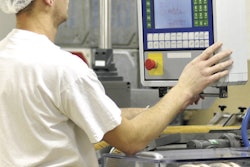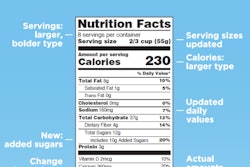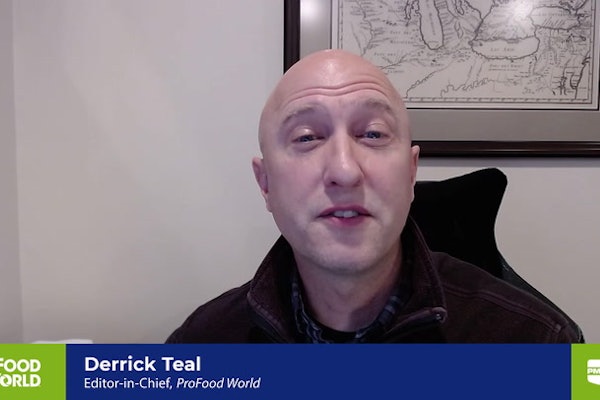
Many food safety systems have been built around minimizing risk, controlling hazards and using risk-based thinking to facilitate decisions. Food science students and food industry staff required to perform a “hazard analysis” in either a HACCP (Hazard Analysis Critical Control Point) or a FSMA (Food Safety Modernization Act) setting often find it confusing how these terms are different, but how they are also inter-related. This article explores these terms and their applications in an effort to clarify and simplify them, and to point out the differences between food risks and hazards and how they apply to modern food safety systems.
We live our lives taking certain risks: driving a car, flying in an airplane, sky diving and even eating food with the risk of contracting a foodborne disease. Risk is an objective term generally used to describe in quantitative terms an estimate of the size or magnitude of a hazard. Risk calculations or risk assessments include the hazard and probability that the hazard will cause an effect. Many risks can be calculated by mathematics (hazard X exposure to hazard = risk). A number of probability (e.g. one in a million) can be applied to the risk to help put it in context. In many situations, a low-level risk (one in a million) may be acceptable, as it is likely minimal in relation to other risks. Risks are often considered relative to other risks and to exposure time (e.g. lifetime of exposure) as a judgment of their potential harm. In the food industry, the Centers for Disease Control and Prevention (CDC) periodically updates the risk of illness or injury due to foodborne disease. CDC has estimated the risk of contracting foodborne disease at one in six individuals.1
Foodborne disease is a serious issue that will likely affect someone we know or, perhaps, even ourselves. The risk of foodborne disease must be addressed in foodservice and in food production environments. The objective is to reduce risk by avoiding, eliminating or reducing hazards to an acceptable probability of occurrence. Considering the risk equation, we can reduce risk by controlling the hazard and/or controlling its probability of occurrence. These are the major operational elements of modern food safety systems:
1. Develop a list of potential hazards.
2. Rank these based on risk by evaluating their severity and likelihood of causing harm.
3. For hazards that must be controlled to ensure food safety, design and implement preventive controls to mitigate the hazards.
As a risk-reduction example, food microbiologists often talk about a 5-log kill to reduce a pathogen population to an acceptable level. In terms of risk, this represents reducing the hazard and the risk of becoming ill from the untreated food (i.e., food containing 100,000 infectious bacteria) to a controlled situation, in which the treated food now only contains no more than one pathogen per unit. In this example, the treatment gave a 100,000-fold pathogen reduction to result in a noninfectious safe level and a new foodborne risk of only 1 in 100,000 units.
Defining hazards
Anyone who plays golf knows about hazards. A bunker, sand trap or water are hazards to be avoided. Experienced golfers who are familiar with the course know where the hazards are and how to control their balls to avoid them, preventing the consequences of being in the hazards and ruining their scores. With their knowledge and the score card guide, experienced golfers design their game plans for hazard prevention.
Let’s apply these hazard prevention concepts to building a food safety system. But first, consider the most prevalent hazards associated with foods. In the early days of HACCP, microbial hazards were top of mind, and early HACCP plans were based almost entirely on controls for foodborne pathogens. As HACCP evolved, considerations were given to adding chemical and physical hazards to what must be controlled to produce safe foods. With the further developments of FSMA, radiological and intentional adulteration hazards were added. Today’s list of top food hazards is shown on this page.
A risk analysis or assessment is described in food safety terms as an opinion or judgment of a given situation based on the inputs about the harm of the hazard and the exposure to the individual. Risk is used in FSMA as an analytical judgment about a potential hazard. A potential hazard that has a minimal risk may not need to be considered in a list of potential hazards, whereas a known or foreseeable hazard would need to be included. For example, pesticides used in production of fruits and vegetables can be toxic at high levels and cause harm to humans. However, their safe application and further washing fruits and vegetables allows them, under typical circumstances, to be considered of minimal risk and, therefore, they do not need to be put on a list of hazards to be mitigated and controlled. In general, the grower and harvesting operations have taken care of minimizing any risks from pesticides. Following the language of FSMA, risk-based decisions can be used to determine whether a potential hazard gets included in the hazard analysis exercise for further consideration. In the food safety team’s discussions about potential hazards to consider, the PCQI (preventive controls qualified individual) will use the team’s judgments to include or exclude potential hazards based on an assessment of their risk.
In the worlds of HACCP and FSMA, the Hazard Analysis Principle and its implementation are probably the most important but perhaps the most difficult steps to accomplish in building an effective food safety plan. A certain level of knowledge, skills and analytical abilities is needed, and this proficiency requirement is recognized in both HACCP and FSMA. HACCP calls for the hazard analysis and HACCP plan development to be done by an individual that has been trained in the application of HACCP principles or be otherwise qualified through job experience. FSMA takes it a bit further. It requires that a PCQI develop the FSMA food safety plan and system, specifiying that that individual has been trained and successfully completed an FDA-recognized PCQI course or otherwise be qualified through job experience to develop and apply a food safety system. In both cases, the lead food safety person will likely set up a team to tackle plan development and may include qualified outside help as well as internal resources.
The identified potential hazards included in the team’s list for hazard analysis can be further evaluated as to their need to be controlled. The need for a preventive control is based on the nature of the potential hazard and the particular operations, processes and procedures for that facility. The hazard analysis is a detailed review of each potential hazard’s ability to cause harm. During this review of potential hazards, it could be concluded that prerequisite programs can adequately mitigate the potential hazard, so it does not need a preventive control applied. The conclusion of the hazard analysis for each potential hazard is a binary outcome (need to control? yes or no). Through knowledge and experience, the PCQI concludes that the hazard does or does not need an assigned preventive control. This conclusion is based on many factors, both intrinsic and extrinsic, and the rational for the PCQI’s conclusion should be recorded in the written hazard analysis. The outcome of the hazard analysis should address and include potential hazards for that operation by identifying those hazards for the ingredients, equipment, handling steps or manufacturing processes in the operation that are foreseeable hazards and reasonably likely to occur, and, therefore, require a preventive control. In FSMA rules, this is described as determining if a hazard requires a preventive control because of a known or reasonably foreseeable hazard.
Just as important as developing a comprehensive list of risk-based potential hazards is conducting a thorough and informed hazard assessment and risk analysis for the food safety plan. It is the assessment of hazards combined with the decision on how to control the hazard that will lead to a strong, effective food safety plan. As mentioned earlier, knowledge and experience often prevail as the best resources to develop a food safety plan. Some food safety individuals employ tools to assist in the analysis and assessment process. Decision trees were common with HACCP programs. However, more recently, use of a risk assessment matrix has become a popular tool. There are many different matrix versions available, but they often result in only a qualitative risk termed as high, medium or low. This measurement of risk can result in uncertainty on how to apply this information.
Alternatively, the author’s proposed matrix (see table on this page) includes both the assessment and proposed actions to control the hazard and would appear to be much more helpful in the process of assessment and proposed actions. Using the matrix, any hazard judged to result in illness and/or injury would need a preventive control assigned to mitigate its harm. Other hazards identified as being manageable or tolerable would need some control, but this could be provided by prerequisite programs (PRPs), through a master GMP (good manufacturing program), or be managed by a supplier or some other means. In some cases, a potential hazard cannot be completely eliminated, but it can be reduced to a level of tolerance with strong GMPs, PRPs, allergen control programs, foreign/domestic supplier control programs, glass control programs, etc.
Finally, the matrix gives an all clear for potential hazards that have a minor/minimum impact and are unlikely to occur. Using a matrix like this is not necessarily definitive, but along with other tools for hazard analysis and control, such as FDA guidance documents, the PCQI and food safety team have a good chance of identifying known and foreseeable hazards, quantitating their severity and likelihood of occurrence, and assigning effective preventive controls. As with HACCP, FDA has developed Hazards and Controls Guides to assist food safety teams in deciding the known and foreseeable hazards for specific food operations or specific types of foods to help facilitate identifying hazards, preventive controls and the crafting of a food safety plan.2
This article presented several terms for consideration: hazard, risk, risk-based decisions, and hazard analysis or assessment. This discussion, along with the examples presented and the use of a tool like the matrix, will provide clarity on these terms and how they are applied to construct more effective food safety systems.
References
1. CDC, 2016. www.cdc.gov/foodborneburden/2011-foodborne-estimates.html
2. FDA Hazards and Control Guides: Juice, Seafood and Human Foods.
Guidance for Industry: Juice HACCP Hazards and Controls Guidance First Edition.
www.fda.gov/Food/GuidanceRegulation/GuidanceDocumentsRegulatoryInformation/Juice/ucm072557.htm
Fish and Fishery Products Hazards and Controls Guidance - Fourth Edition.
www.fda.gov/Food/GuidanceRegulation/GuidanceDocumentsRegulatoryInformation/Seafood/ucm2018426.htm
Draft Guidance for Industry: Hazard Analysis and Risk-Based Preventive Controls for Human Food.
www.fda.gov/Food/GuidanceRegulation/GuidanceDocumentsRegulatoryInformation/ucm517412.htm






















